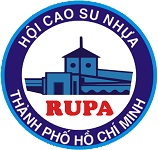
Ulcer disease on rubber tree bark is a significant issue in agriculture and rubber cultivation, especially during the rainy season. This disease poses a significant risk to latex yield and requires effective preventive measures to safeguard the income of farmers.
Ulcer disease on rubber tree bark and its causative agents
Ulcer disease, also known as black streak, canker, or bark canker, is a dangerous plant disease caused by the fungus Phytophthora palmivora (Bult.) Bult, P. botryosa Chee, and P. meadii McRae. The rainy season is the most dangerous time for ulcer disease on rubber trees. During this period, the disease can spread rapidly and cause considerable damage to the tree's bark. This disease has been present for a long time and has inflicted significant harm to the rubber industry.
In Vietnam, the main fungi causing the disease are P. palmivora and P. botryosa. They can enter the tree through wounds on the rubber tree, especially after tapping. Ulcer disease on rubber tree bark can invade the tree within 72 hours after tapping, so applying preventive measures with fungicides after each tapping is crucial to prevent the disease from spreading.
Symptoms and consequences
The initial symptoms of ulcer disease on rubber tree bark may not be pronounced and can be easily overlooked. The first signs often appear as small, slightly sunken brown streaks parallel to the tree trunk. While these colors may not be intense, they have the potential to develop into larger areas, causing serious consequences for the rubber tree.
If not timely controlled, the disease can lead to severe consequences, including:
1. Bark rot: The disease spreads, causing the tree's bark to rot. This not only weakens the tree but also creates favorable conditions for the invasion of harmful insects.
2. Yellowish fluid and foul odor: Diseased wounds often produce yellowish fluid with a characteristic foul odor. This is a clear sign of ulcer disease on rubber tree bark.
3. Black streaks on wood: Under the affected area, the rubber tree wood may exhibit black streaks, a clear indication of fungal invasion and significant damage.
4. Termite infestation and tree breakage: If the disease becomes severe, it can damage the entire tapping surface, creating favorable conditions for termite infestation and causing the rubber tree to break.
5. Loss of tapping area and reduced latex yield: The most serious consequence of ulcer disease is the loss of tapping area and a potential reduction in latex yield, up to 100%.
Preventive measures
1. Do not tap when the tapping surface is wet: The most important preventive measure is to avoid tapping the tree when the tapping surface is still wet. This helps eliminate ideal conditions for fungal invasion.
2. Tap using proper techniques and control weeds: Tapping the tree using proper techniques and ensuring the elimination of weeds around the rubber tree is crucial. This helps create a better environment for the tree and prevents the spread of the disease.
3. Use fungicides: Utilize products such as Mexyl MZ 72WP (8% metalaxyl + 64% mancozeb) mixed with water and apply a 2-3cm wide band on the tapping surface when the disease appears. This is a specific measure to control the disease after each tapping.
Ulcer disease on rubber tree bark is a significant issue that requires careful attention and management to protect the income of farmers and sustain the rubber industry. Implementing effective preventive measures can help minimize the impact of the disease and maintain stable latex yields.
Source: Agriculture Vietnam







